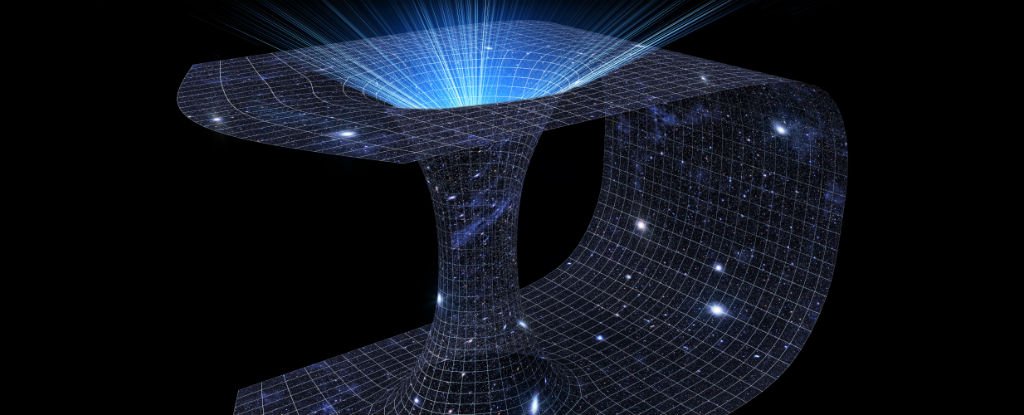Physicists say they've figured out how to 'see' inside a black hole

What lies beyond the event horizon.
Physicists have come up with a new way to predict what lies beyond the event horizon of a black hole, and it could give us a more accurate idea of their mysterious internal structures.
Thanks to the first - and now second - direct observation of gravitational waves emanating from what scientists think are black hole mergers, we’re starting to get our first real evidence that black holes do actually exist in reality, not just theory.
But even if we can prove they really do physically exist, there’s no getting around the fact that, thanks to their enormous gravitational pull, black holes swallow up anything that falls beyond their event horizon.
Not even light can escape the pull of a black hole, and that means no instrument on Earth, no matter how sophisticated, can visualise what exactly is going on in there. Wormholes? Singularity? All the pens? ¯\_(ツ)_/¯ (Please let it be wormholes.)
Studying black holes is basically like doing science backwards. Usually you’ll observe something strange and new first, go and analyse the crap out of it, and come up with an hypothesis to explain and classify it - possibly with the help of some complicated mathematics.
When it comes to black holes, we start with the hypotheses and mathematics, and then try to figure out how to observe what we think is there.
But there’s one big problem with this method, as a team from Johns Hopkins and Towson University point out - physicists have been building their view of the internal structure of a black hole based on how certain mathematical coordinates fit together.
Depending on which coordinates you choose, and how they’re viewed from your position as an observer, you’ll likely get very different results from someone who chooses a different set of coordinates from another viewpoint.
Just look at the mess our maps and atlases have made when it comes to our perception of our own planet, because we’ve been representing certain landmasses subjectively, rather than relatively.
"[A]ny such coordinate choice necessarily results in a distorted view, just as the choice of projection distorts a map of the Earth," the team argues. "The truest way to depict the properties of a black hole is through quantities that are coordinate-invariant."
The researchers, led by physicist Kielan Wilcomb from Towson University, say in order to figure out what’s inside a black hole, you must focus exclusively on mathematical quantities known as invariants, which have the same value for any choice of coordinates.
At the 228th meeting of the American Astronomical Society in San Diego this week, the team reported that there are 17 such quantities related to the curvature of spacetime that can be used to study black hole interiors. Because of certain mathematical relationships between them, they say only five are truly independent.
"[O]ne needs five such quantities to fully characterise the curvature of spacetime inside all possible time-independent black holes," they report.
The team has published their findings on pre-press website arXiv.org ahead of peer-review, so other physicists can use these five invariants to try to construct the inside of a hypothetical black hole. We won't know for sure how sound their technique is until independent tests verify it, but Wilcomb and co. say when they tried it out themselves, they saw something truly awesome:
"We compute and plot all the independent curvature invariants of rotating, charged black holes for the first time, revealing a landscape that is much more beautiful and complex than usually thought."
Now all we need to do is figure out if we can get to another universe through a black hole, so we can all plan our parallel universe vacations.
Comments
Post a Comment